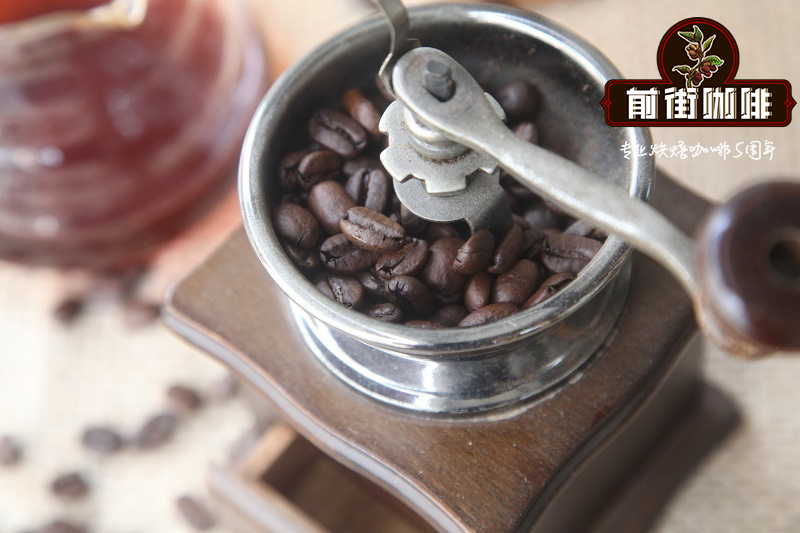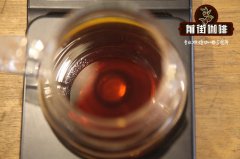What effect does the growing environment of coffee have on the variety of coffee? Where does coffee grow?

Professional coffee knowledge exchange more coffee bean information please follow the coffee workshop (Wechat official account cafe_style)
What kind of coffee varieties should be planted in what environment, which involves complex genetic traits and ecosystems, has become the hottest field of coffee science in recent years.
(1) Coffee grown at higher altitude is more sour and fragrant, but its oil concentration is lower than that of low altitude coffee. These two factors make high-altitude coffee more sour, which can be confirmed by the eight major producing areas in Guatemala, Huehuetenago (located on the border with Mexico in the northwest of the dangerous country) and Fraijanes (located on the southeastern border with El Salvador). The sour taste of coffee in these two areas is significantly higher than that in the other six regions, including Antigua. In addition, when the altitude increased by 100 meters, the temperature decreased by 0.6 degrees Celsius, and the study found that every 300 meters increased the sucrose content of coffee beans by 10%. In principle, the higher the content of sour elves and sucrose, the more mellow the coffee. This is because higher altitude, lower temperature and large temperature difference between day and night can slow down the growth rate of coffee and accumulate more nutrients.
(2) Shade trees also help to nurture the sour aroma of coffee, because shade can block the bright sun at noon, so that coffee trees will not be exposed to high temperature, their metabolism will not be too fast, and will help the development of nutrients and aromatics. Therefore, in bourbon and Tibica in lower altitude areas, shade trees must be planted to improve the sour taste of coffee. Some producing areas are less than 1,000 meters above sea level, but coffee has an elegant sour taste. Kona, Hawaii, is an example, because Kona Island is far from the equator at a latitude of about 20 degrees. It is subtropical, and the sun is not as strong as in the tropics. More importantly, the wind blew up after noon on the big island of Hawaii, giving full play to the effect of shading trees. Thick clouds played a great role in cooling coffee trees and lowering their metabolism. In short, high altitudes (but no frost in winter) and shade trees slow the growth of coffee, giving it plenty of time to develop fragrant elves. This kind of ecological coffee has obvious sweet and sour aromas.
(3) there is a positive correlation between bean size and altitude, which is easy to produce full-shaped beans, so some producing areas like to determine the grade of beans by bean size rather than hardness. However, the bean size is related to the variety, and the body shape is not the best rating standard.
(4) the caffeine content in Arabica is positively correlated with the planting altitude, and the caffeine content increases by 10% for every 300 meters. Caffeine in Guatemala at 1400 meters above sea level is about 10 percent higher than coffee at 1100 meters. On the contrary, chlorogenic acid is inversely proportional to altitude, with each increase of 300 meters, the chlorogenic acid in coffee decreases by 5%, which may be related to the disease-resistant system of coffee; the lower the altitude, the more susceptible to disease, so the higher the chlorogenic acid. Luyuan green is also one of the original culprits of bitter coffee, which explains why the lower the altitude of coffee, the less elegant the sour taste. Coffee trees have the highest content of chlorogenic acid in plants. The chlorogenic acid stored in coffee beans alone accounts for 60.8% of the weight of Arabica beans and more than 10% of Arabica beans. The content of chlorogenic acid in coffee trees will increase with the deterioration of the environment, such as high temperature, dryness, and insect pests. The heavier the pressure on plants to survive, the higher the chlorogenic acid will be, but this organic acid is one of the sharp weapons for plants to resist diseases and insect pests. That's interesting. The more neglected the coffee farmers take care of the coffee trees, or the more sinister the growing environment, the higher the chlorogenic acid content of the coffee beans, and the more sour and bitter the coffee will be, as if the coffee also has spirituality: "if you don't take care of me carefully, I'll give you bitter coffee!" "on the other hand, the carefully planted coffee farm is suitable for soil and water, with a large temperature difference between day and night, foggy, and surrounded by shade trees. Such a good Arabica tree makes it grow carefree, and the concentration of chlorogenic acid is relatively low, so it is easy to produce good coffee with sweet and sour and fruity aromas. Therefore, the content of chlorogenic acid can also determine the "regional taste" of coffee, which is particularly important for boutique coffee.
People often fall into the myth of coffee-producing countries, thinking that coffee from a certain country belongs to a category with thick pulp or strong sour taste, or that beans from a certain country must be soft beans. This is a narrow view that you can't see the forest for the trees. It is true that the producing country affects the flavor of coffee, but the more important determinants are latitude, altitude and variety. The closer to the equator, the hotter the climate, the higher the altitude in order to grow extremely hard beans. On the other hand, in the subtropics, which are slightly farther from the equator, the temperature is lower, and the elevation may be lower than that in the tropics, and hard beans can be grown or close to very hard beans.
For example, countries such as Colombia, Kenya and Ethiopia are located near the equator at latitudes less than 10 degrees, so extremely hard beans are planted at higher elevations, ranging from 3,600 feet (about 1100 meters) to 6300 feet (2,000 meters). Because of the abundant rainfall, it can be harvested twice a year. In addition, the producing areas of southern Brazil, Zimbabwe, Mexico, Jamaica and Yunnan are slightly farther from the equator and are subtropical at latitudes between 15 and 24 degrees. Hard beans can be grown at an altitude of about 1,800 feet (550m) to 3600 feet (1100 meters), but the climate in this area is different from the dry and wet season and can only be harvested once a year.
Try not to use the producing country as the standard to distinguish between beans and categories, but also consider the altitude, latitude and variety of the producing areas in order to more accurately grasp the properties of beans. It is generally believed that Brazil belongs to soft beans because the elevation is often less than 1000 meters, but don't forget that Brazil has a subtropical climate, and it is not necessary to grow extremely hard beans at an altitude of 1500 meters. Brazil's award-winning boutique beans are about 1200 meters above sea level, or even less than 1100 meters above sea level, but they are as elegant and sour as red wine. If Guatemalan coffee trees are planted below 1200 meters, extremely hard beans cannot be planted at this altitude because of low latitudes. The safest way to distinguish bean sex is based on altitude, latitude and variety, which is more professional.
In addition, the bean grain size is closely related to the variety and cultivation environment. The study found that 80% iron is more than 17 mesh wider than Kadou-that is, 6.75 mm-but only 65% of bourbon beans meet this standard. The bean size of the main varieties of boutique coffee is Tibica > Kaddura > Kaduai. However, it should be noted that variety is not the only factor that determines the size of soybean grains. Soil nutrients, environmental pressure and planting density also directly affect the size of beans. If the planting environment is not good, even the beans of Tibica will shrink to less than 15 mesh. Coffee trees with insufficient nutrients are easy to produce low-density floating beans and defective beans.
Important Notice :
前街咖啡 FrontStreet Coffee has moved to new addredd:
FrontStreet Coffee Address: 315,Donghua East Road,GuangZhou
Tel:020 38364473
- Prev

The effect of altitude on Coffee Why coffee beans growing at high altitude are better?
Professional coffee knowledge exchange more coffee bean information Please pay attention to the coffee workshop (Wechat official account cafe_style) Coffee raw beans are generally graded according to raw bean size, defect rate and altitude. The size and defect rate of raw beans are easy to understand. But why do some producing areas use the altitude of coffee beans as the basis for grading? many coffee sellers also boast that their coffee is at a high altitude.
- Next

The influence of latitude of coffee growing place on coffee what are the requirements of coffee growing environment?
Professional coffee knowledge exchange more coffee bean information Please pay attention to the latitude of the coffee workshop (Wechat official account cafe_style) is it important to the growth of coffee? Sometimes we hear some coffee sellers deliberately emphasize that beans come from high mountains (high latitudes), and in some tasting activities, we also find that the geographical conditions of different latitudes give different flavors to coffee beans.
Related
- Beginners will see the "Coffee pull flower" guide!
- What is the difference between ice blog purified milk and ordinary milk coffee?
- Why is the Philippines the largest producer of crops in Liberia?
- For coffee extraction, should the fine powder be retained?
- How does extracted espresso fill pressed powder? How much strength does it take to press the powder?
- How to make jasmine cold extract coffee? Is the jasmine + latte good?
- Will this little toy really make the coffee taste better? How does Lily Drip affect coffee extraction?
- Will the action of slapping the filter cup also affect coffee extraction?
- What's the difference between powder-to-water ratio and powder-to-liquid ratio?
- What is the Ethiopian local species? What does it have to do with Heirloom native species?

